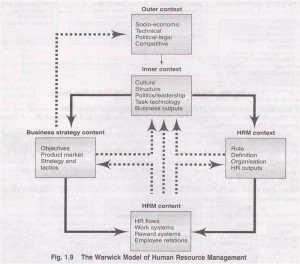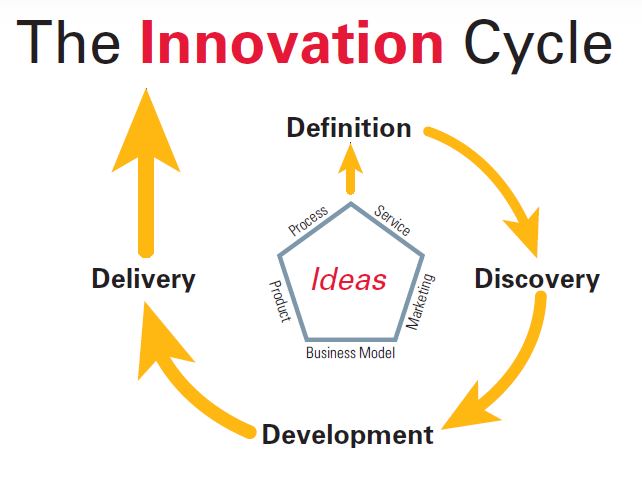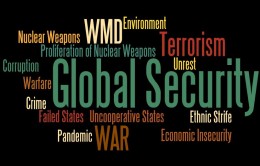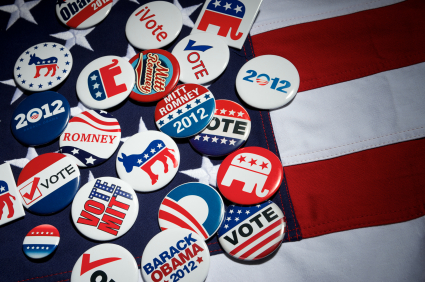Managing Corporate Culture In Nando Fast-Food Company
This post discusses corporate culture in great length. The operation of business on a global scale requires that firms should cultivate their international business by respecting the national differences in the countries where they expand to. This is what Nando had failed to observe. It has rigidly and excessively stuck to its corporate culture exhibited in South Africa. It failed to note that South African’s national culture is not the same thing as what applies in countries in European and Asian states.
Also, the Nando’s management in the South African headquarter had given no room for the management of its firms in other countries to operate freely; this has given them no room for innovative strategic marketing planning in observance to the environment in which they operate in. the national culture of South Africa has greatly influenced the corporate culture of the Nando’s organization and it thus constituted a negative impact when its adherence and transfer to other national culture that is not compatible, led to the unprofitable business operations in these countries.
The level of competition in the fast food industry in contemporary times is getting tense, with expansion in big firms and new entrants to the business. Thus for organization like Nando the need to observe people’s custom, taste, national culture in carrying out its strategic marketing this is germane for their effective and successful operations as they expand the business.
Introduction
The dynamic environment where modern businesses operate pose challenges for them to maintain effective management of innovation. These environments are also characterized by uncertainties. The managements of contemporary business and their resources are becoming ever tasking because of changes in management, which emanates from the introduction of new strategies, keen competition, and improvement in technology, inter-alia. Change is a constant phenomenon that is bound to occur, but in a situation where its vicissitudes become a frequent occurrence managers of business are put in a tight corner to adequately strategize in order to follow the trend in the industry and the environment where they operate. The external environment in which an organization operates goes a long way in influencing its strategic management. Hence, changes in these environmental segments- the demographical segment, economic segment, political/ legal segment, technological segment, socio-cultural segment, and global segment- these need to be inculcated in the organization strategic management for the organization to compete adequately with its rivals. In this view Peter (2005:7), argue, “Dynamic in nature, the strategic management process is the full set of commitments, decisions and actions required for a firm to achieve strategic competitiveness and earn above average returns”.
As an organization continues to expand in its operational base, it is a noticeable fact that these expansion tend to affect the pattern of existing corporate culture the organization had hitherto operated on. This becomes more prominent when the organization is venturing into a different environment or country with different corporate culture from the exhibited national culture.
Strategic marketing is thus, faced with high challenges in the aspect of cultural harmonization of an organization operating with several units and outlets in trans-nationals and across borders operations. In an ever increasing competitive global business arena, the need to strategies and be in tune with current trends in an industry, this is very germane to the success level the organization would attain.
This study looks at Nando a medium scale business enterprise with its problem in operations of its franchised business, as a result of the difference in environmental corporate culture where the firm plans to extend its operations.
Background of Nando
Nando is a South African fast-food firm with restaurants that operate in many outlets in the country. The restaurants have over the years operated an organizational and corporate culture that depicts the South African environment in which it operates. The local South African dishes are widely served. Nando’s corporate culture is built around preparing chicken delicacy with a corporate culture that reflects the ‘Nandocas’ (Nando’s people) attitude, values, pride, passion and their courage. Nando believes in 100 percent satisfactions of its customers. Thus, as an organization, it has embraced the phrase that “100 percent” and “GEES’ which means ‘spirit’ in Afrikaans language, to build a corporate culture in giving satisfaction to its numerous clients.
Nando started operating in South Africa since 1987, and has used its marketing strategy to effectively ensure growth for the firm, thereby making the firm to begin franchising its operation to other countries, outside South Africa.
Nando’s Corporate Culture and Failure to Franchise to International Markets
The Nando’s organization has sought for drive for its expansion into the international fast-food market. Thus, it has embraced the plan to expand its operation through franchising to other international countries. From the Rothwell’s five generations of innovation, Nando is currently applying the second-generation Innovation process (Rothwell 1994, pg 8). The firm wants to diversify its operations by making its appearance in new international market. However, it has placed more emphasize on static scale of economies by holding tight to its corporate culture. Thus, the pattern of Nando organizing new restaurants operations in the same old South African fashion and technology has made the organization fail in its franchising and plan to gain market share in international market.
The expansion of Nando organization to other countries, this has adopted strategy of management the organization in a way where it focused greatly and concentrated on its national organization’s corporate culture. The marketing strategy introduced into its operation in European and Asian countries have towed the culture in South Africa. Hence, the over concentration on the existing South African culture, with little or a little (insufficient) focus on existing cultures in countries where the Nando’s expansion operations are directed to, this has being a major reason why the attempt at the franchising the organization’s concept failed. The sticking to past way of conducting business in South Africa, is not enough to see its foreign operations to success; there is the need to carry out a thorough research and analysis on the corporate culture existing within a country where the organization intend to expand its operation to. In this view, Oden (1997:3) argues that “many of today’s most successful organizations continue to survive because many years ago they offered the right product at the right time. Most product, market and process venture decisions of the past were made without the benefit of strategic thinking or planning. However, present-day managers increasingly recognize that venture decisions must be made in the context of a venture strategy. As they find themselves in ever more complex and turbulent environments, their past internally oriented, reactive approach to decision making is giving way to an externally oriented proactive approach that requires more analysis”.
The need for Nando to analyze both its internal and external environments is a needed strategic framework for the organization to thrive in international corporate venture and strategy. Hence, this long-range strategic and proactive orientation to decision making is an important element of the innovation culture (ibid). The need for an organization to adapt to the corporate culture in the environment where it operates goes a long way to show how successful it would be. The strategy in place should take into cognizance those cultural variables that would blend with the environment and people’s life style and taste. This is where the management of Nando International has missed the mark. There is the intention to transfer the Nando’s South African corporate culture to countries that has no cultural similarities; such as Israel, England, Australia, Japan, and Canada. The reason why Zimbabwe could thrive is adduced to the fact that it shares the same cultural similarities with South Africa; Nando’s home country.
To buttress this argument Ulijn et al (2000), illustrated that, “when a multinational firm, such as Philips, operates in the United States, it is accepted almost as a U.S. firm since it is loosely related to the individualistic U.S. society where interaction is explicit, low context, and monochromic. On the other hand, to be successful in Japan, Philips should behaves as a Japanese firm, where national culture and corporate culture overlap in a tight, collectivistic society where interaction is implicit, high context, and polychromic”. The above illustration shows that every country has its own cultural characteristics and variables that would compact with the environment in which business operation is done.
Also, the head office of Nando in South Africa has no flexible guide on the operation of its international businesses outlets, setting rules and guidelines for their operations. This has prevented the management in the different international countries from considering the variables and existing corporate culture where they operate, and strategize towards this line for effective operation. These tend to constitute hindrance to a successful implementation of Nando’s franchising attempt of its concept internationally.
The Role of National Culture in Nando’s Expansion
National culture is a great reckoning force which the Nando’s organizations have greatly imbibed in. the emphasis on maintaining the South African culture, in the organization, this is shown in every aspect of the business. To make this national corporate culture to be retain every new staff are adequately orientated on the existing cultures they are recruited., and it is expected they keep to this culture. The adaptation to national culture by the Nando outlets and operation in South Africa, this can be say to be a major factor that has resulted in the success story recorded in the country. As the organization’s activities are built round the national culture, this is reflected in the management style, relationship between staff and management, selection of partners. The inherent national culture in Nando is a factor that has made its Zimbabwe operations to succeed. This is adduce to the fact that South Africa and Zimbabwe have similar national culture
Corporate identity is an important factor to enable an organization competes favorably in an industry. “Based on this notion the effective management of an organization’s identity result in the acquisition of a favorable corporate image and, over time, of a favorable corporate reputation which leads an organization’s key stakeholders and stakeholder groups to be favorably disposed towards it” (Balmer & Wilson, 1998). According to Balmer (1997), cited in Balmer & Wilson (1998), an important pre-requisite for a corporate reputation to contribute to business survival and success is that it offers a distinct advantage in relation to the organization’s external environment”. For Nando South African operations, it has greatly utilized its corporate identity and culture in building a favorable reputation for itself. And this has led to the success and expansion of the business. It can be said here that the corporate identity exhibited by the organization operations in South Africa, this is very conformable to the national culture of the country’s environment in which the organization operates. To show the level in which national culture plays in the success of Nando’s operations in South Africa, when the expansion of the organization gets to European and Asian countries, with the dogged move of the management to inculcate the same corporate culture in a different environment made the operation there unprofitable and unsuccessful.
As earlier stated corporate culture is a reflection of the national culture and the environment in which the organization operates. The national culture of a state should be adapted onto by the corporate culture for the organization to thrive in its operation.
The role of national culture in Nando’s expansion can be said to be effective and successful at the national level, i.e. in South Africa. But internationally, the excessive emphasis place on the national culture in the expansion operation in Europe and Asian countries, this is a negative aspect that has affected the successful outcome of operations in these countries. The Nando’s have concluded that the Nando’s national culture could be transferred to international operation; hence, there is the disregard for the inherent cultures existing in these international countries. Thus, this incompatible corporate culture and the existing national cultures in the international countries is a factor responsible for the unprofitable operations at this level.
Hence, as a way out of this, it becomes a difficult challenge for the Nando to blend its South African corporate-cum-national culture with what operates internationally. The advertisement of Nando’s product, services, and organization’s operations, this also goes to buttress the role of national culture on the organization’s operations; adverts done for the South African outlets cannot adequately be utilize for operations in European and Asian countries. This also goes to show that the Nando organization’s success in South Africa is greatly tied to its ability to compact with its national culture and the effective utilization of this for the organization’s advantage.
Industrial Analysis and How It Affected the Corporate Culture of Firms like Nando
The level of global competition in the fast food industry is always on the increase. This is adduced to the in flock of new entrants, the expansion of existing firms to other countries. Big name in the industry such as McDonald, which has over 23,000 restaurants in 110 countries, a close rival to MacDonald is Burger King which operates a total of 9,644 restaurants in 110 countries, followed by Wendy; second largest rival to MacDonald, with a total of 6776 restaurants in 32 countries, Hardee operates 3080 restaurants in 20 countries (McDonald. ca, 2005). With this high level of expansion of major players in the fast food industry, coupled with the springing up of new firms entering the industry, these have led to the increase in the competition level in the industry. An organization operating in this industry need to adequately strategize in its marketing activities for it to curve a niche for itself.
The high competition level in the industry can be analyzed using Porter’s five forces. The threat of new entrants in the fast food industry is significantly high, as there are new entrants springing up every moment. This is due to low capital outlay required in setting a small fast food business, also the basic skills required to run a fast food restaurant is basically not to high that would require long term training. And there are abundant of skill labour that can be recruited to man the fast food joint when created. These f actors are responsible for the ease at which new entrants flock the industry and this has helped in increasing the level of competition in the industry. According to Porter (1985), the intensity of rivalry among existing competitors depends on the balance of competitors, industry growth, the size of fixed or storage costs, the amount of differentiation or switching costs, the minimum size of investment, the types of competitors, the strategic stakes, and the size and type of exit barriers.
Another threat in the industry is the threat of substitute product or services. In recent times, most fast food restaurants have come up with innovative pattern of preparing there food and service delivery; some have developed services for a targeted group in the society such as busy workers. This innovative way of operating leaves the customers, and those who patronize fast foods, many room to choose from the available substitutes. The treat of substitute product and services tend to reduce the level of profit that is available for the organization operating in the industry. In this industry there are firms that produce similar products; this also tends to constitute a threat to the operations of firms in the industry.
The bargaining power of suppliers, who supply raw materials for processing the food in this fast food industry, is very high, since there are many firms operating in the industry they would have many buyers wanting to buy from them; thus increasing the demand level. Many big firms like McDonald, have engage on their own backward linkages programme, whereby they produce most of the food stuff and livestock use in operating their fast food restaurants. Buyers also may have high bargaining power in this industry, since there are different substitutes and operators in the industry; thus forcing the price down for buyers.
The strategic challenges thus facing firms in the industry has to do with how they ca n strategize and carry out their marketing function in a way to make them have competitive advantage in the mist of the high competition in the industry. And profit maximization tend to be low if the marketing strategy is not effective enough to increase the level of sales made available to a firm operating in this industry.
Recommended Ways Nando Could Develop Its Business Operation
As earlier stated the competitive level in fast food industry is very tense; thus, for a firm to operate adequately in this industry there is the need that an effective marketing strategy is put in place; which would be goal oriented and enthusiastically pursued. For firms like Nando that is expanding, its operation to foreign countries there is the need that the issue of environment where the expanded business is position, this is critically considered in line with the organization existing corporate culture. “…a number of theoretical perspectives related to the role of firm-specific knowledge in competitive strategy-resource-based view of the firm, dynamic capabilities knowledge-based view of the firm, organizational learning-have began contributing to our understanding of international strategic alliances” (Simonin, 1999). And it is germane that modification to existing corporate culture is made to be in tune with the features of the environment that are on g round. The importance associated with paying attention to a country’s culture and environment in the management of business operation, especially as applicable to fast food business, this is for the organization to operate effectively and adequately apply its resources in order to adapt to the environment and also to meet set objectives at the most efficient manner. “Given the global strategic perspective, the corollary that it should be accompanied by a universal standardization is difficult to sustain as such a stance is product oriented and in defiance of the marketing concept. It is also apparent that different nationalities buy similar products for different reasons and different versions of a product for reasons of values, custom and preference as well as price” (McCall & Stone, 2004:5).
From the fore going, organization such as Nando as should strategize in a way where the custom in a country, that the national culture is respected. It is not as if one is saying that they should lose their cooperate corporate culture and concepts, due to expansion, but people’s custom, taste, preferences, reasons for patronizing a firm’s product and service, all these are different. So it becomes germane that for the firm to operate adequately well in the international arena, these considerations need be put in place for proper marketing strategy.
The model below is modified to shows a full recognition to the external context environment and how it should Nando’s business units are coordinated to operate; and it identifies a two- way rather than a one – way relationship with organisational strategy. There is also important recognition of the impact of the role of the personnel function on the human resource strategy content.

Source: Original by Henry and Pettigrew, (1992:139) “Model of strategic change and human resource management” in ‘Patterns of strategic change in the development of Human Resource management’ in British Journal of Management.
The model above diagram shows the effects of Nando’s corporate culture on its outlets, in other international countries where the business is franchising. It shows that franchised business should be allowed to operate uniquely, but not totally out of the parent organization’s corporate culture. Certain environmental influences from political, economic and cultural and social segments of the environment should be recognised for the Nando’s outlet to operate adequately in the country there are established.
Suggested Innovation Approach for Nando
Scenario Building
Having looked at the failed bid of Nando to actually succeed in its expansion and franchising bids, it is recommended that the organization embrace a scenario building approach in studying the environment in which it wants to expand it business to before implementing the plans. This would enable the organization to be able to build up the right corporate culture and curtail challenges and uncertainties.
One way of managing the uncertainties associated in frequent change is through scenario planning. According to Ringland (1998), scenario planning is a tool for business to cop with the unpredictability of constant change and help them find better solutions for the future. Scenario are often thought of as a management development tool, which is use for creating shared vision, as well as better plans, in organization. Thus, it is utilized in facilitating strategic planning and helps in influencing people’s attitude towards questioning assumptions and accepting change (ibid). Scenario planning tends to be a better tool than other traditional management tools for the tackling high uncertainties and complexity in modern business management. Shoemaker (1991) defines scenario planning as a script- like characterization of a possible future presented in considerable detail, with special emphasis on causal connections, internal consistency, and concreteness. According to him, the focus is not on forecasting the future, or fully characterizing its uncertainty, but rather on bounding the uncertainty.
Thus, for Nando scenario building is a germane tool that would ensure cultural uncertainties from environments where it want to expand its fast-food operations are taken care of before the firm’s outlets are established.
Modelling as a way of improving innovation management for Nando

The above diagram shows the circular flow of innovative modelling. A model formulation is ensured through the desire to come up with a better model so as to gain more competitive advantage over rivals, and this need for improvement brings about the better allocation of resources that would result in the derivation of vital information for the effective operation of the organization. The derivation of better information would make Nando to see its previous innovative model as asymmetric and the desire to future improve this lead to another circle of innovative turn around and the engagement on new modelling session.
Two key aspects underlying this information innovation cycle are transparency and accountability. The transparency of information is in fact closely tied to accountability. Transparency can be defined as the ability of the public and of external regulatory bodies to view the actions, procedures, and outcomes of a particular business entity (or department within). Public access to information concerning the operations of a business or an entire industry facilitates independent evaluation (Ceres, 2003). Transparency translates to accountability when these independent evaluators have a significant influence over the fate of the company or industry in question. This influence might come in the form of policy making or buying power. When inferences made by the public have the ability to affect its welfare, such an entity becomes more than just morally or ethically accountable to that public. It also becomes incumbent upon that business or industry to perform in ways that are favorable and fair. Without transparency, therefore, there can be no accountability and without accountability, modelers will not have the motivation or incentive to take ownership of the models and therefore the cycle. However, with accountability and transparency working in tandem, model validation will foster an information innovation cycle, which in turn will lead to a lasting competitive advantage.
Conclusion
Corporate culture has a great effect on way an organization operates. It gives the organization its uniqueness, i.e., in other words corporate culture of an organization gives it corporate identity. The corporate culture may constitute a hindrance to the successful operation of the organization when the organization is operating a rigid corporate culture with no room for modification or change; this is more specially noticed when the organization is operating and expanding its business to different countries. As each country has its unique national culture, it then requires that when the organization is carrying out its strategic marketing planning this should be adequately taken into cognizance. Modification to existing corporate culture should be made so as to make the organization operates effectively and profitably well.
References
Balmer, J.M.T. & Wilson, Alan (1998) “Corporate Identity: There Is More To It Than Meets the Eye” in International Studies of Management & Organization. Vol.28, No 3
Ceres (2006) “Information transparency and corporate accountability” Ceres Benchmarking Electric Cost
McCall, J.B. & Stone, M.A. (2004) International Strategic Marketing: A (N) European Perspective. New York: Routledge
Oden, Howard W. (1997) Managing Corporate Culture, Innovation and Entrepreneurship Westport, CT: Quorum Books pp. 51
Porter, Michael E. (1985) Competitive Advantage: Creating and Sustaining Superior Performance. New York
Proctor, Tony (2000) Strategic Marketing: An Introduction London: Routledge
Ringland, Gill (1998), Scenario Planning: Managing For the Future. John Wiley & Sons Limited
Rothwell, Roy (1994) “Towards the Fifth-generation Innovation Process” International Marketing Review, Vol. 11 No. 1
Shoemaker, Paul J.H. (1991) “When and How to Use Scenario Planning: A Heuristic Approach with Illustration” in Journal of Forecasting. Vol. 10
Simmonin, Bernard L. (1999) “Transfer of marketing Know-How in International Strategic Alliance: An Empirical Investigation of the Role and Antecedents of Knowledge Ambiguity” in Journal of International Business Studies Vol. 30, No 3
Ulijn, Jan et al (2000) “Innovation, Corporate Culture and Strategy. What is the Mission for International Business Communication?” in The Journal of Business Communication .Vol. 37, No 3. pp. 293




